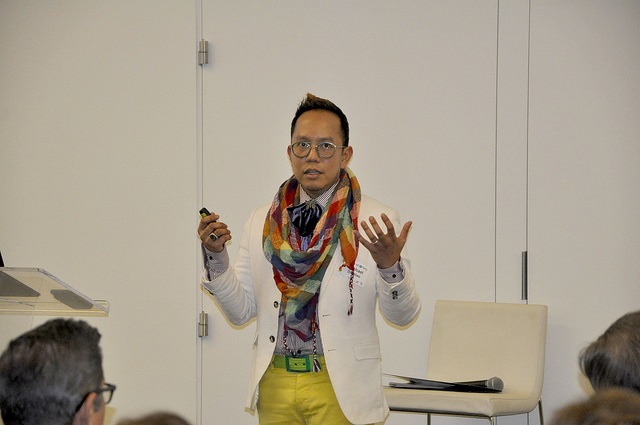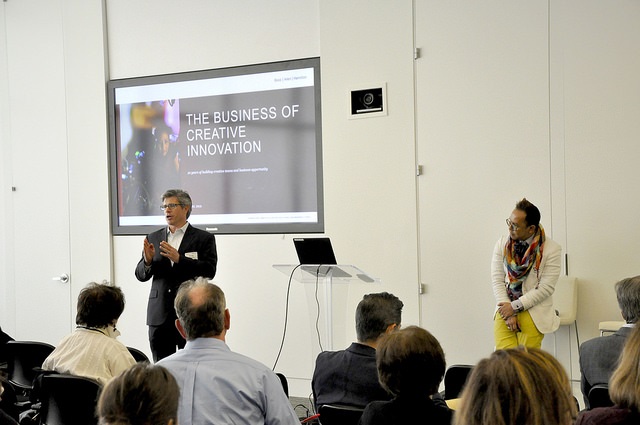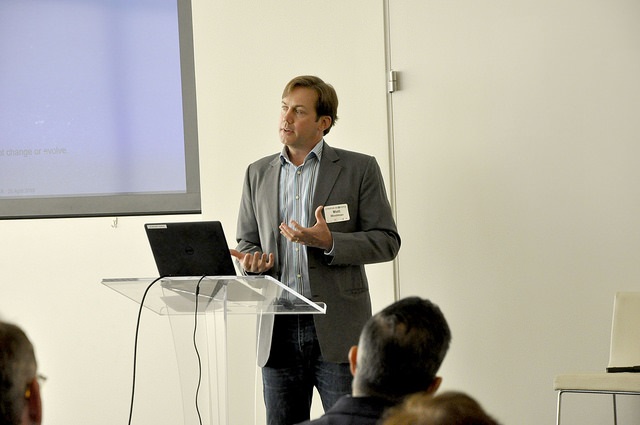This column is sponsored by BizLaunch, a division of Arlington Economic Development.
What if the art and design students teamed up with engineers, business majors and programmers to tackle issues in banking and health care? What if scientists using data for biocomplexity and behavioral research tapped creative thinkers for breakthrough results?
What if your creative ‘side hustle’ is now contributing to a $6 billion online sector? And what if the competitive advantage in a 104-year-old blue chip ‘startup’ company is a big team of creatives?
Hearing these questions — and answers — is what galvanized those who came to hear the presenters of Return on Creativity: An Arlington Asset at Virginia Tech Research Center on April 26.
It was off to an energetic start with Arlington Economic Development’s Director Victor Hoskins, who knows a thing or two about what it takes to be competitive and uniquely positioned to attract business. “We’ve been driving the idea of a creatively-driven commerce for years — through policy, support and development you quite frankly don’t see in many communities.”
Matt Woolman, Director of Creative Entrepreneurship in the School of the Arts, Virginia Commonwealth University, opened the presentations. Pioneering a new workforce, Matt strives to keep his students out of the classroom and in real world problem solving environments.
Design may be the entry point for students in the School of the Arts, but it’s simply foundational for the exit strategy.
What has creativity got to do with biocomplexity research and behavioral science? Just ask Gizem Korkmaz from the Biocomplexity Institute of Virginia Tech and Sean Marsh, CEO of Fors Marsh Group and you’ll hear how digging deeper than the surface analysis, deploying creative tactics and atypical data sources, has been the key to novel outcomes.
Is what you do outside your day job contributing to a growing sector minimally estimated at over $5.9 billion? The findings in Robert Shapiro’s report, Unlocking the Gates: America’s New Creative Economy, is just the tip of the iceberg of how many in our workforce are creating unique content.
Finishing out the program was Michael Dumlao, Director of Brand, Booz Allen Hamilton.
Part super creative, part social scientist, Michael found himself at the epicenter of overseeing the company’s shift in internal and external culture. Growing a creative team from 7 to 140 in 4 years was instrumental in transforming a strictly suit and tie, government core brand to one of powerful innovation.
Want to join more programs about the impact and influence of creatives in business? Sign up for ongoing news and updates here.




